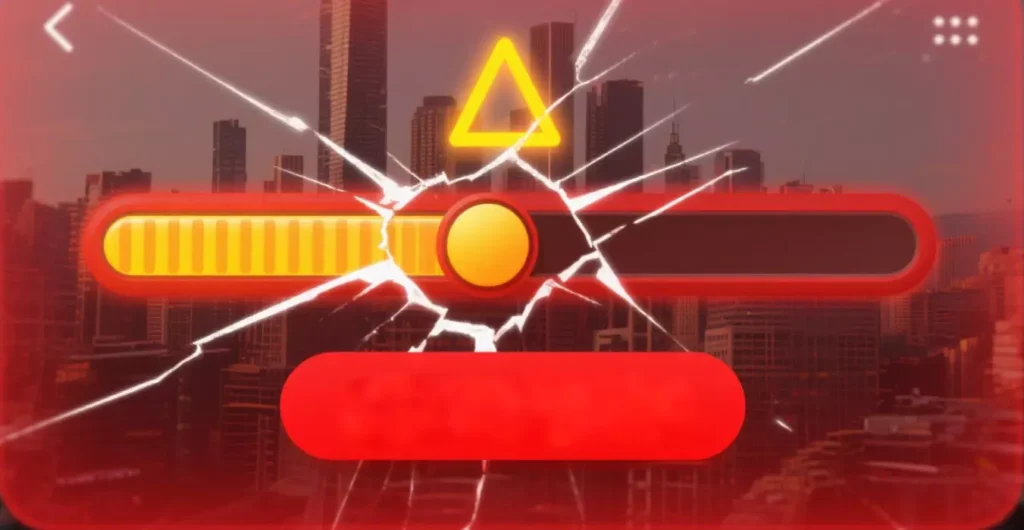We’ve all been there. You’re trying to log in, make a purchase, or access information, and suddenly you’re stopped by a wall of distorted letters or a grid of images asking you to “select all squares with traffic lights.” You follow the instructions perfectly, yet you’re met with a frustrating message: “Verification failed.” This is the dreaded CAPTCHA error, a digital roadblock that can turn a simple task into a maddening loop.
But why do these errors happen, and more importantly, how can you fix them? This comprehensive guide will walk you through the common causes of CAPTCHA errors and provide actionable solutions for everyone, from casual internet users to developers running complex automated tasks.

What Exactly Is a CAPTCHA Error?
A CAPTCHA (Completely Automated Public Turing test to tell Computers and Humans Apart) is a security tool designed to protect websites from spam and malicious bots. When you successfully solve one, you prove you’re a human. A CAPTCHA error occurs when the system fails to verify your attempt, often repeatedly, effectively locking you out.
This failure doesn’t always mean you made a mistake. More often, it’s a sign that the website’s security system has flagged your activity or connection as suspicious, even if your intentions are perfectly legitimate.
Common Causes of Persistent CAPTCHA Errors
Understanding why you’re being flagged is the first step to solving the problem. Here are the most common culprits.
Your IP Address Is Flagged:
An IP address is your unique identifier on the internet. If you are on a shared network (like public Wi-Fi, a university, or an office) where someone else has engaged in suspicious activity, the entire network’s IP address can get a poor reputation. Websites see requests from this IP and immediately become wary, triggering more frequent and difficult CAPTCHAs.
Browser and Cache Issues:
Your browser stores data (cache and cookies) to load websites faster. Over time, this data can become corrupted or outdated, interfering with how scripts like CAPTCHA operate. Similarly, aggressive ad-blockers or privacy extensions can prevent the CAPTCHA from loading and functioning correctly.
Using a VPN or Low-Quality Proxy:
While great for privacy, many people use the same VPN server. This means hundreds of users are accessing websites from a single IP address, which is a classic bot-like behavior. Websites recognize these overused IPs and often present them with constant verification challenges.
Automated Browsing and Bot-Like Behavior:
If you are navigating a website too quickly, opening many tabs from the same site at once, or using automated scripts for tasks like data collection, the system will almost certainly identify you as a bot. This rapid, non-human pattern of requests is a primary trigger for CAPTCHA loops.
How to Fix CAPTCHA Errors: A Step-by-Step Guide
Now for the solutions. We’ll break them down into fixes for everyday users and more advanced solutions for developers and businesses.
Solutions for Everyday Users
If you’re facing CAPTCHA errors during regular browsing, try these simple steps in order:
1.Clear Your Browser Cache and Cookies: This is the most common and effective fix. Go to your browser’s settings (usually under “Privacy and Security”) and clear your browsing data. Then, restart the browser and try again.
2.Disable Your VPN (Temporarily): If you’re using a VPN, turn it off for a moment to access the site. If the CAPTCHA disappears, your VPN’s IP address is likely the problem.
3.Check Your Browser Extensions: Disable your ad-blocker and other privacy extensions one by one to see if one of them is causing the conflict.
4.Use a Different Browser or Incognito Mode: Switching to another browser or opening an incognito window can help bypass issues related to your browser’s specific configuration or stored data.
5.Restart Your Router: This will often assign you a new IP address from your Internet Service Provider (ISP), which can resolve issues related to a flagged IP.
Solutions for Developers and Automated Tasks
For businesses and developers using automation for web scraping or data analysis, CAPTCHA errors are a major operational hurdle. Standard fixes won’t work, as the goal is to avoid triggering the CAPTCHA in the first place.
This requires a more sophisticated approach to managing your digital footprint, particularly your IP address. The goal is to make your automated requests appear as if they are coming from a diverse range of real, legitimate users. This is where high-quality proxy networks become essential. Using a rotating residential proxy service ensures that each request you send originates from a different, clean IP address associated with a real device.
For instance, services like IPFLY provide access to a vast pool of ethically sourced residential IPs, which significantly reduces the likelihood of encountering a CAPTCHA. By routing requests through a reliable network, your automated tasks can proceed smoothly without being flagged as bot activity, saving time and ensuring data integrity.
Hey folks! Wondering how to use proxies without mistakes and grab the latest tricks? Head straight to IPFLY.net for great services, then hop into the IPFLY Telegram community—we chat tips daily, even newbies can catch on fast. Don’t wait, join us!

The Future of User Verification
The good news is that the frustrating “click all the bicycles” era is slowly ending. Technology is moving towards “frictionless” verification methods, such as Google’s reCAPTCHA v3, which analyzes user behavior in the background to assign a trust score without requiring any interaction. This evolution promises a future where security doesn’t come at the cost of user experience.
Until that future is universal, understanding the causes and solutions for CAPTCHA errors will remain a crucial skill for navigating the modern web efficiently and without frustration.


